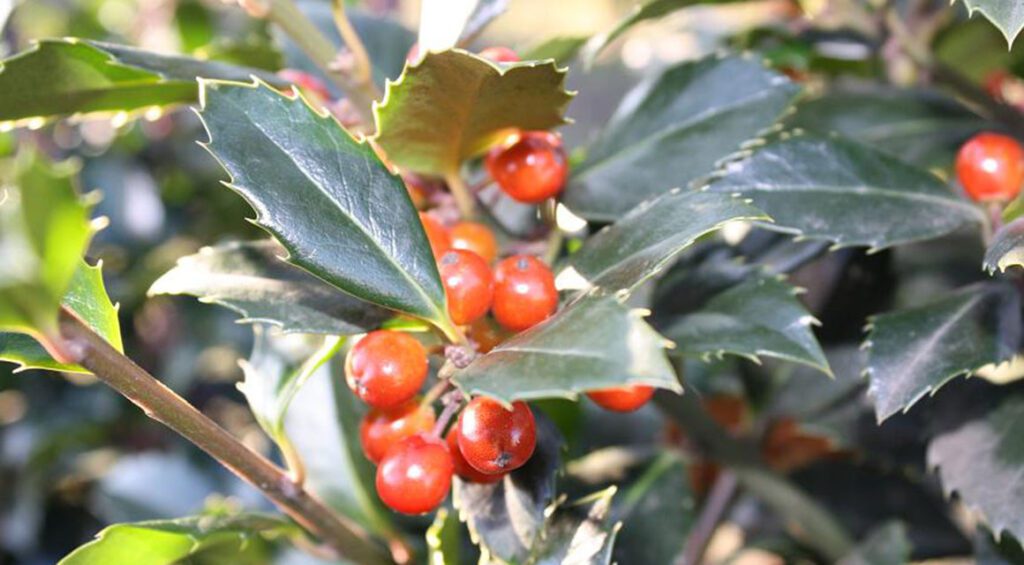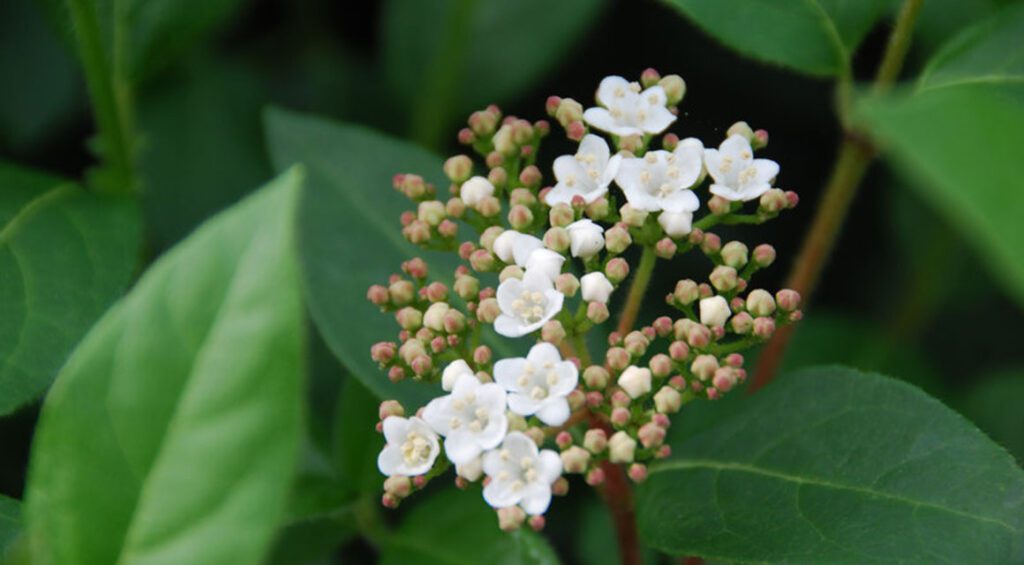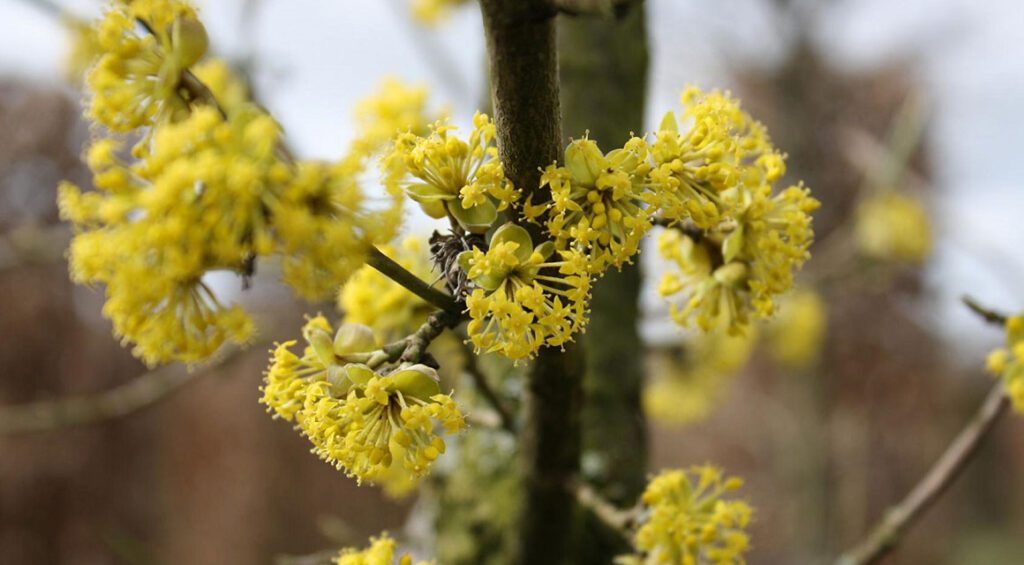When you think of plants in winter, you probably often think of bare, colorless branches. Although this idea fits many plants, there are still plenty of plants that look their best, especially in winter. Think of hedge plants that show their flowers or produce dainty berries in the winter. Winter stays cold, while these hedge plants beautify the winter. As a result, there is always enough to see in your garden in winter, even if the temperatures are low.

Contents
Holly hedge with berries
Holly (Ilex) is perhaps even the most obvious plant variety to decorate for winter. The most important reason for using holly leaves as Christmas decorations is the fact that during the coldest time of the year they produce striking red berries surrounded by pretty, shiny leaves. All holly varieties in our assortment are evergreen hedge plants. The dark green color of the leaves can provide a pretty contrast to the bright red berries in winter. This color contrast makes for a colorful garden at a time of year when many gardens are bare and colorless. In addition, berry-bearing hedges are also always especially bird-friendly.
If you too would like to have a berry-bearing holly hedge in your garden, however, it is important to plant the appropriate male and female holly varieties next to each other. This will allow the ‘Hedge Star’ holly (Ilex meserveae ‘Hedge Star’) to pollinate the female ‘Hedge Fairy’ holly (Ilex meserveae ‘Hedge Fairy’) quite beautifully. Holly ‘Hedge Fairy’ will then produce its first red berries in October or November. The holly ‘Blue Prince’ (Ilex meserveae ‘Blue Prince’) should then pollinate the female holly ‘Blue Maid’ (Ilex meserveae ‘Blue Maid’). Incidentally, these two holly cultivars also stand out for their attractive blue-green leaf colors. The subtle, white flowers on female holly varieties additionally add plenty of color to your garden in the spring.
If you prefer a holly hedge with berries, be careful not to order specimens of Japanese holly (Ilex crenata). Although this hedge plant variety is related to holly, Japanese holly has a very different appearance. Due to its small leaves, Japanese holly has much more similarity with boxwood. This similarity goes so far that Japanese holly is often used as a boxwood substitute.

Flowering hedge in winter
When it comes to early bloomers, we are talking mostly about flowering hedge plants that already show off their flowers at the beginning of spring. For example, the yellow dogwood (Cornus mas) and the forsythia ‘Spectabilis’ (Forsythia intermedia ‘Spectabilis’) bloom already at the end of spring, when their branches are still bare. Their numerous flowers will make your garden more colorful and at the same time announce the arrival of spring. However, the branches of these plants are bare between November and January. Laurel snowball (Viburnum tinus) is evergreen and especially in winter it shows its best side.
At the beginning of winter, the laurel snowball has many, pink flower buds that grow close together. During the winter, the flowers will slowly open and form large, spherical, white flower clusters, which is why the name of this plant also suggests a snowball. The time between the first buds and the wonderful flowers can last from December-January to April-May. After flowering, the bayberry snowball then also has pretty, dark blue to black berries that birds love to eat. This immediately makes your garden much more vibrant, as the bayberry snowball attracts not only birds, but also insects to your garden.
However, the laurel snowball is only moderately hardy, even if its name suggests otherwise. It is therefore not an ideal hedge plant if you want to use it in a particularly cold region or in an unprotected location. However, if you protect its roots from the cold with a winter fleece or foliage, then it can make a lot of difference.

Deciduous, but still attractive?
However, until now we have talked only about evergreen hedge plants. After all, many garden owners prefer not to have a hedge in the garden that has unsightly bare branches in winter. Nevertheless, there are hedge plants that can still provide interesting color accents in the garden even with bare branches. Our dogwood (Cornus) varieties, in particular, are a good example of this. There are quite a few different dogwood varieties that have wonderfully colored, shiny branches. A dogwood has pretty flowers in the summer, plus even its decorative leaves can beautify your garden. However, once the leaves fall off, that’s when the dogwood reveals its otherwise hidden beauty: its branches.
For example, with the redwood dogwood (Cornus alba ‘Sibirica’), you can admire its pretty red twigs starting in the fall, which become visible when the leaves fall in the fall. The redwood dogwood ‘Elegantissima’ (Cornus alba ‘Elegantissima’) is impressive all year round. It has wonderful white flowers at the end of spring, while the white edge of its dark green leaves has special ornamental value. However, once the leaves fall from the branches, then its glossy red twigs emerge. The blackwood dogwood ‘Kesselringii’ (Cornus alba ‘Kesselringii’) is related to the redwood dogwood ‘Elegantissima’, although it has glossy, black branches and fresh green leaves. However, the yellowwood dogwood (Cornus stolonifera ‘Flaviramea’) has greenish-yellow leaves.
A particularly pretty effect can be achieved if you combine one of these dogwood varieties with an evergreen groundcover from our range. Then you will immediately get twice as much pleasure from your garden.


